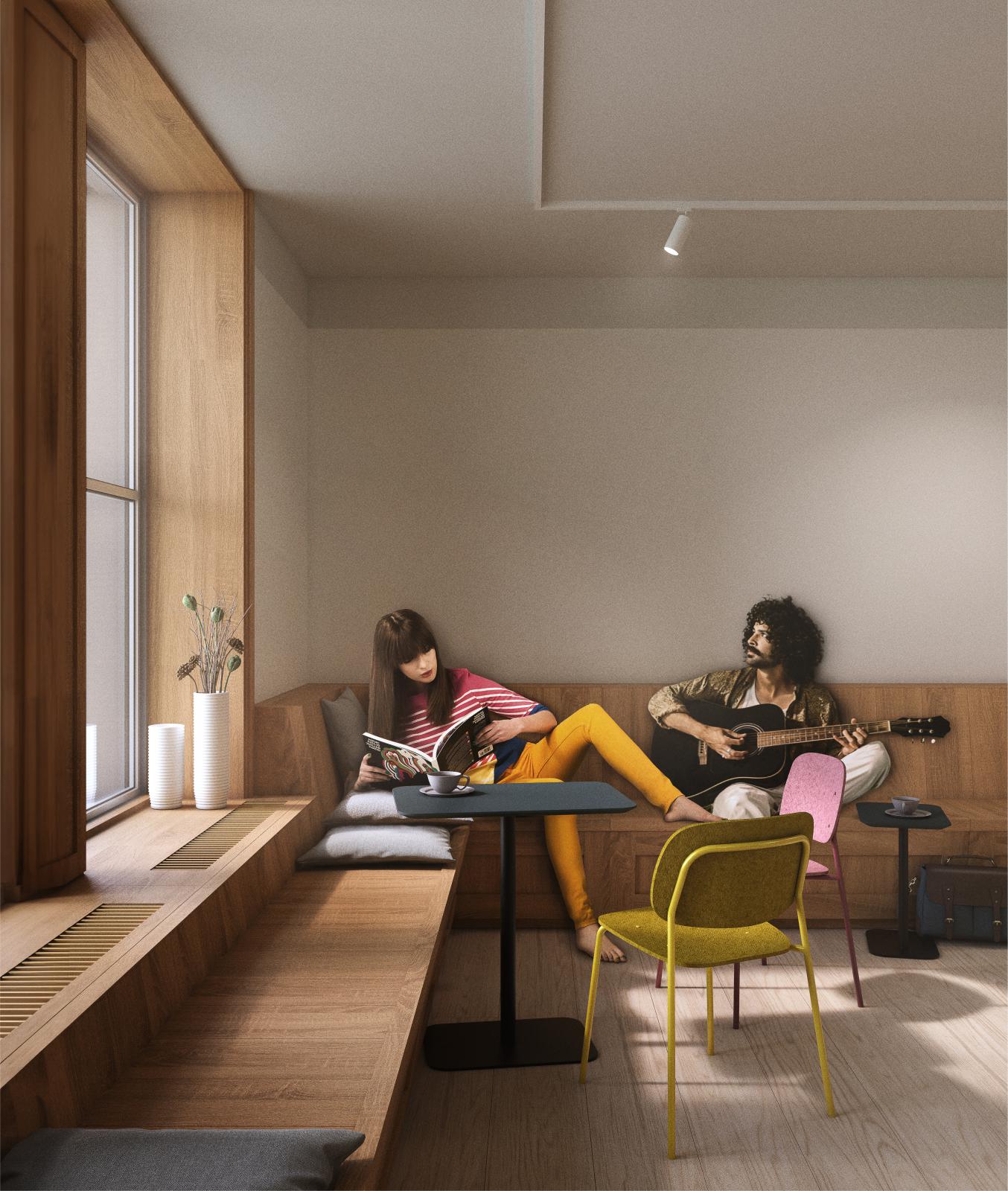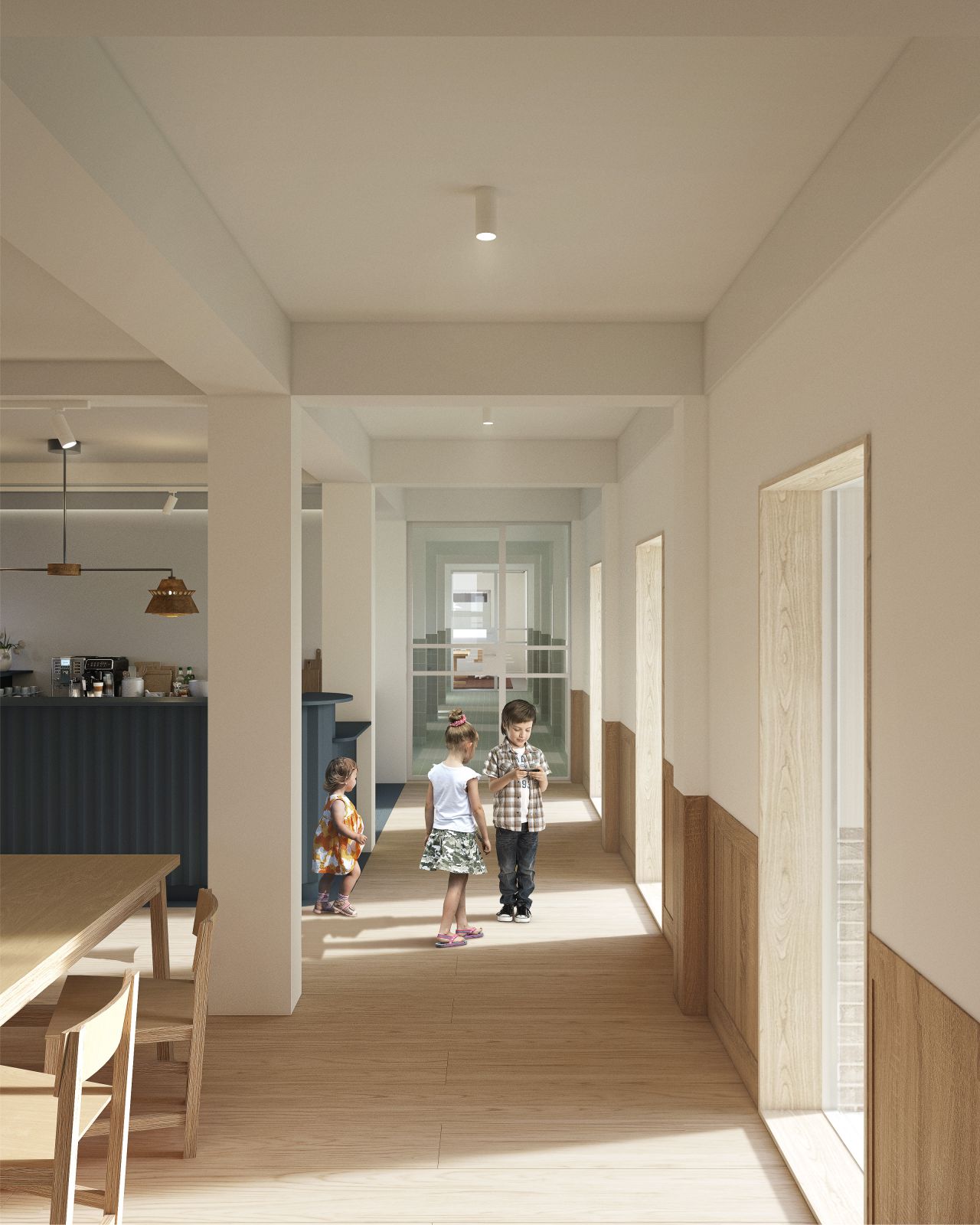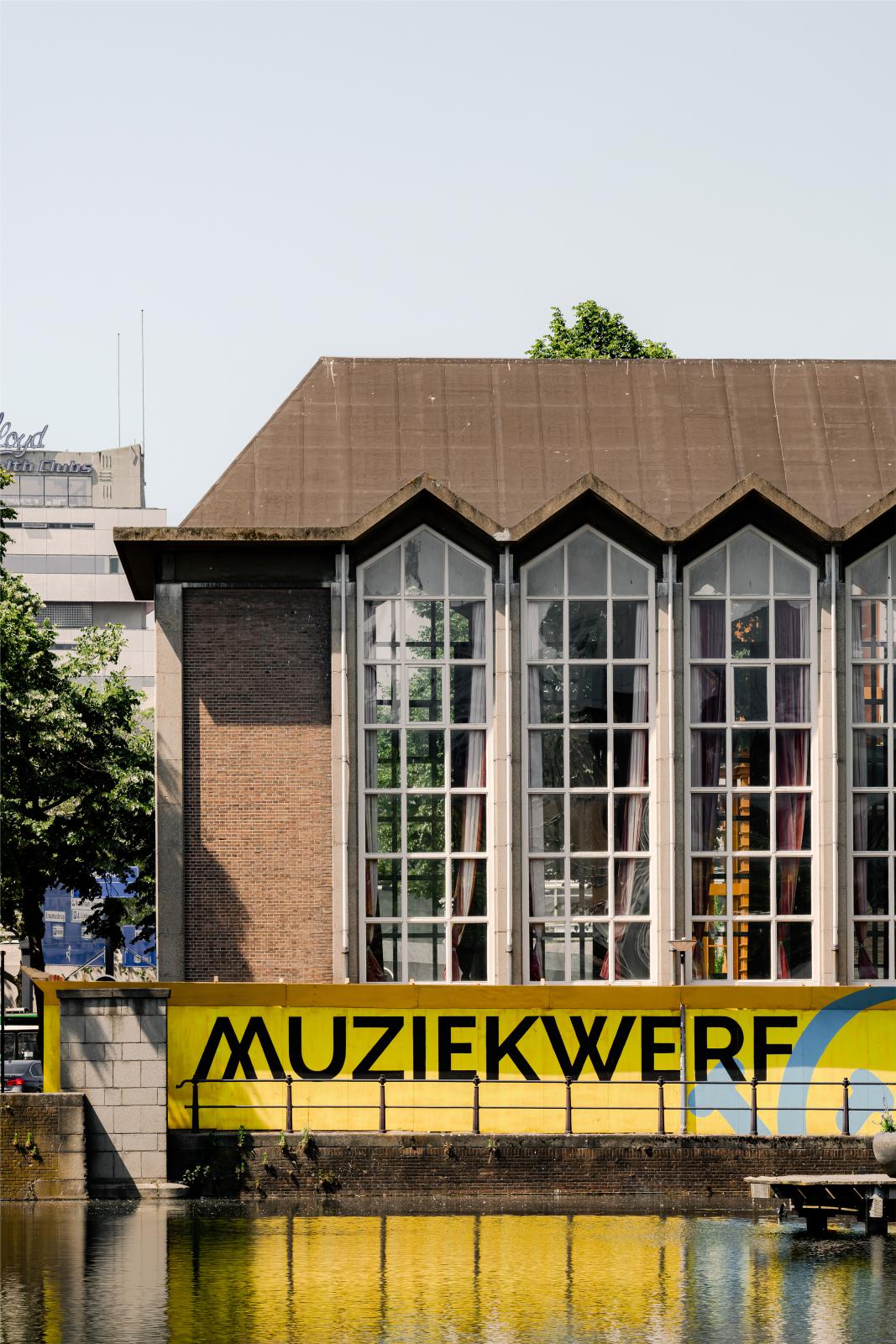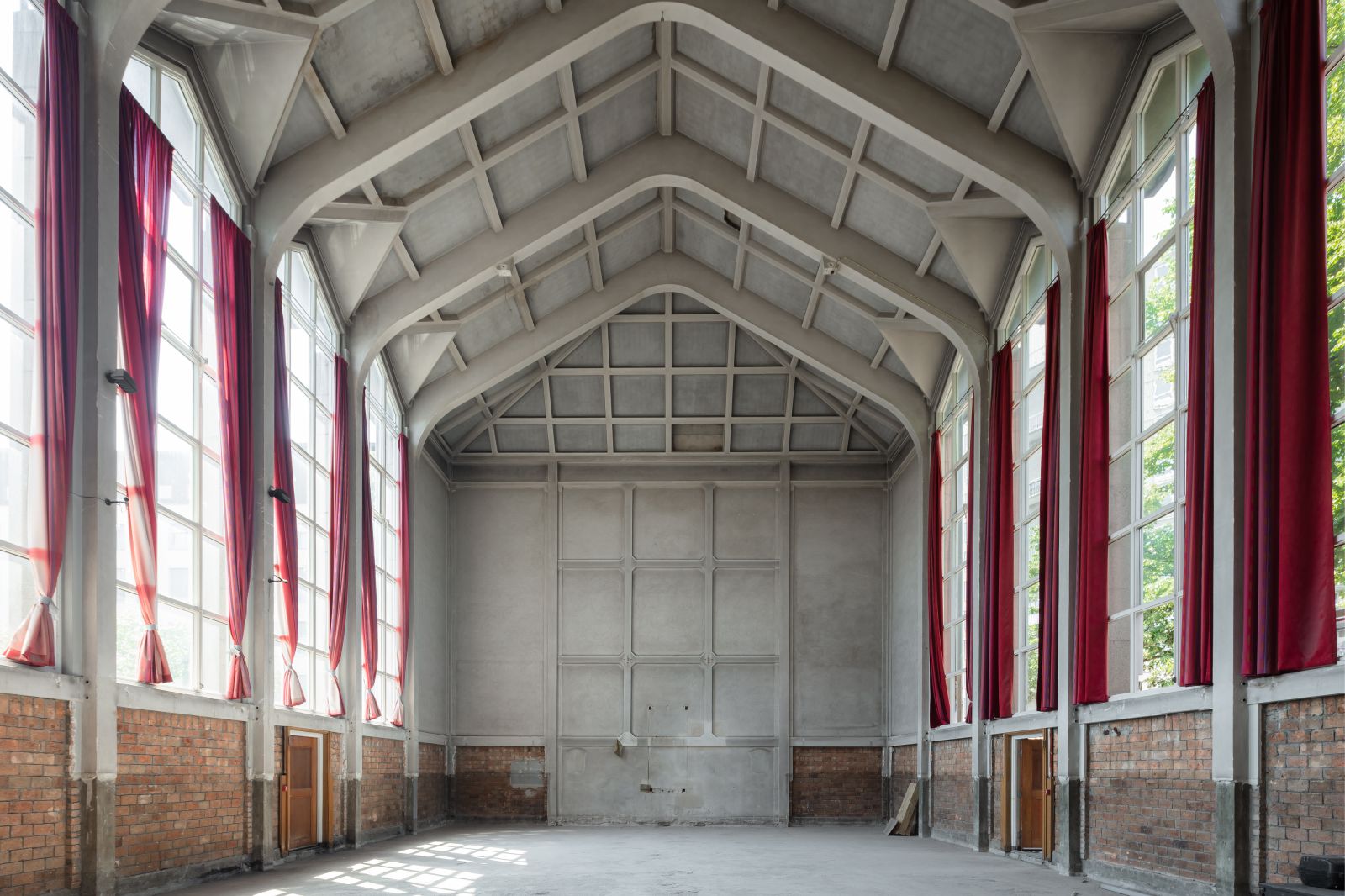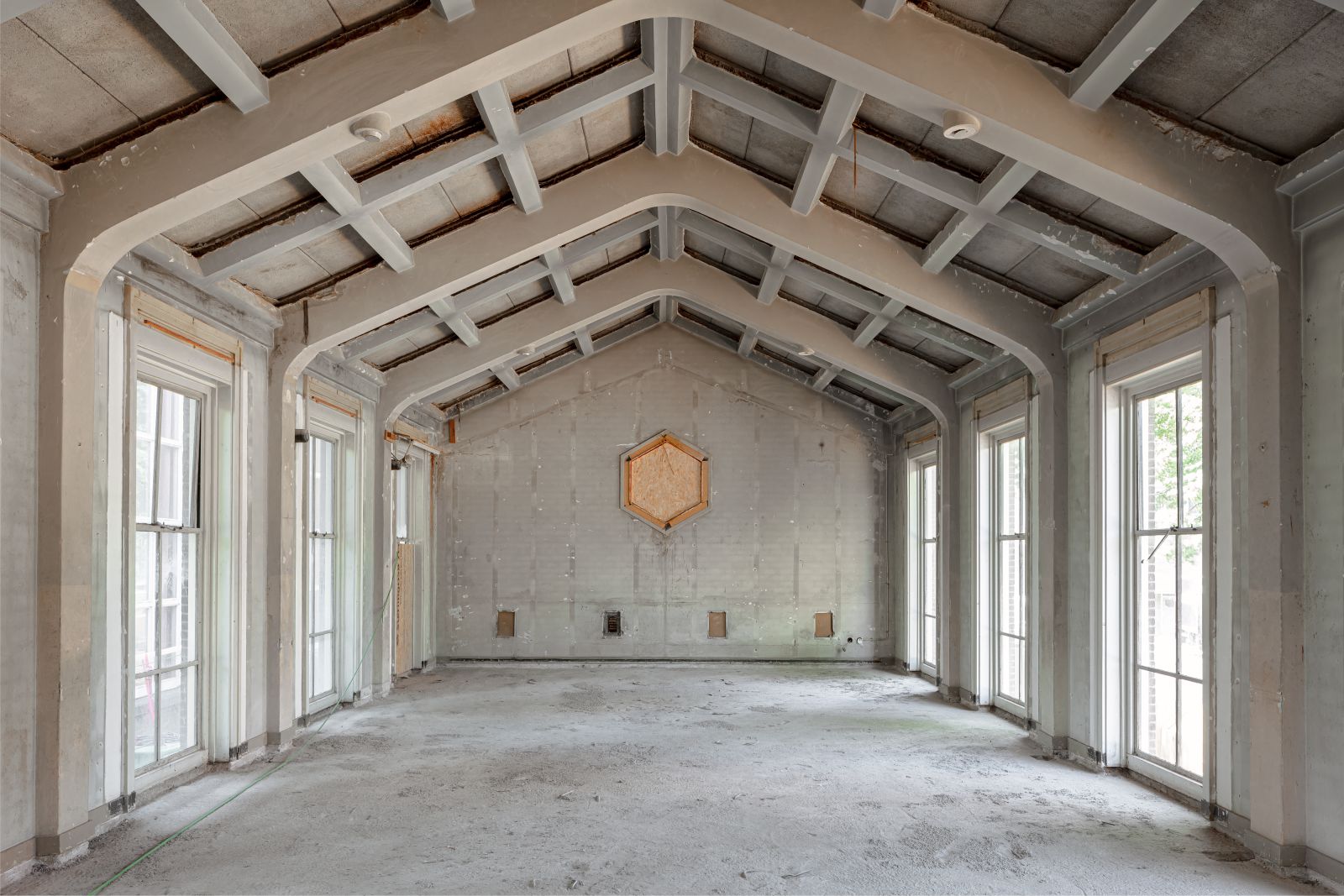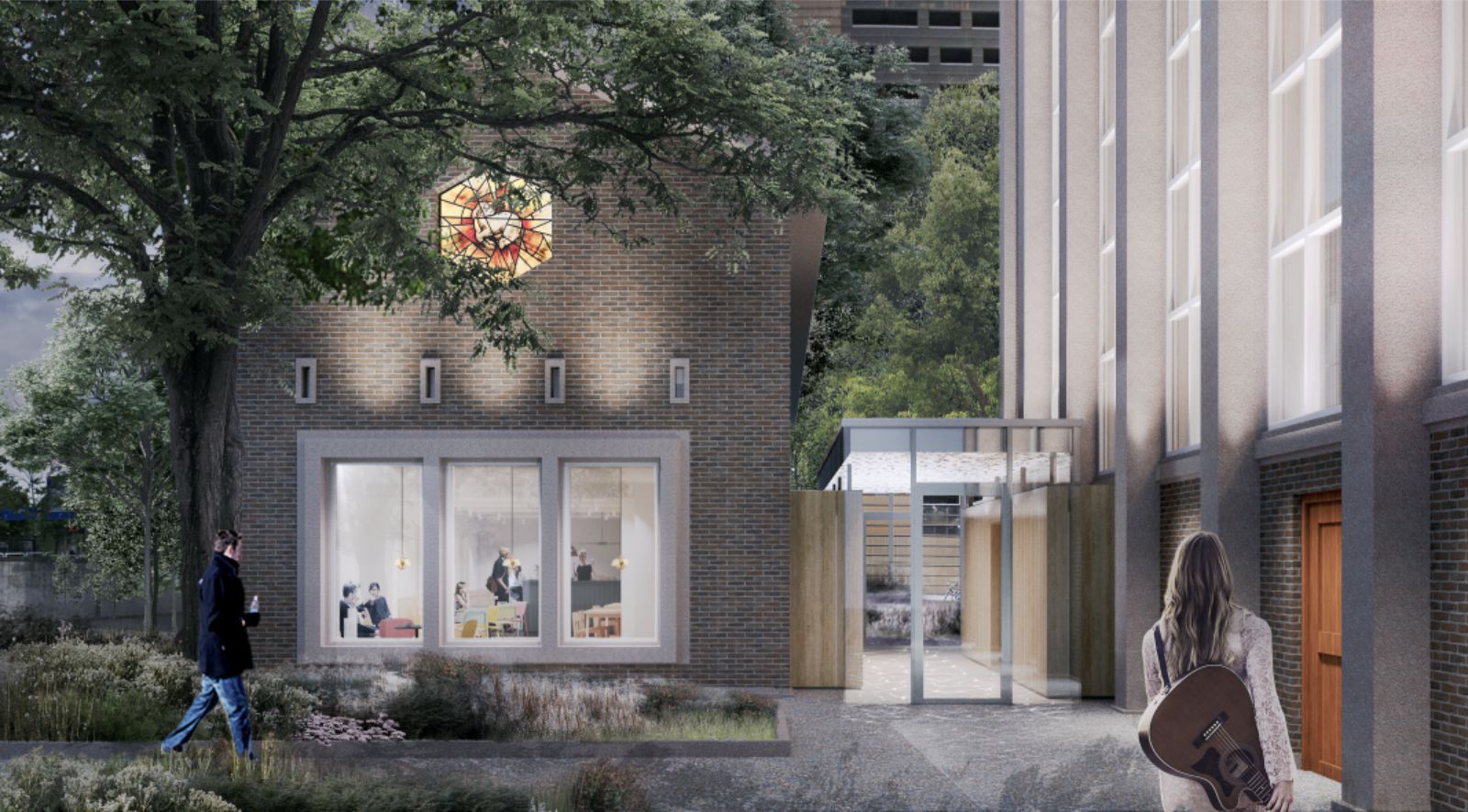Hidden behind the turbulent Hofplein, you can find the small, striking 1951 church building. We are transforming this last Mennonite church into a hotspot for creating music – youth orchestra to pop choir.
As a guardian of Rotterdam’s cultural heritage, the philanthropic foundation Droom en Daad wants to preserve striking buildings for future generations and give a boost to the cultural sector. With Muziekwerf, we are creating a vibrant new place for young musicians to practice and perform.
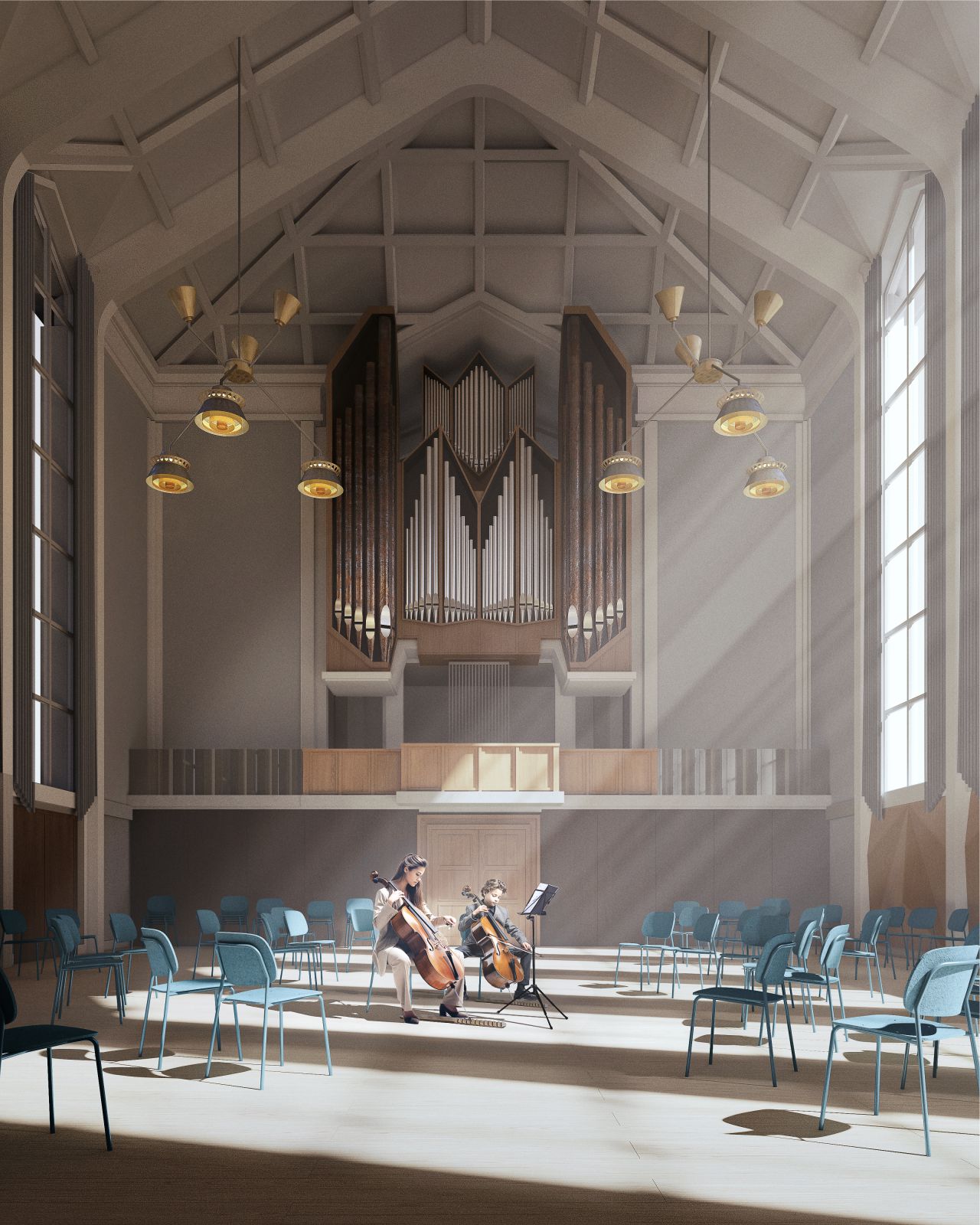
Brutalist Beauty
In the new design, we place powerful ornaments prominently in space. The expressive chandeliers are revised and soon will light up the ceiling in the Music Hall. The plastered concrete structure – a typical cassette ceiling – forms the expressive foundation for the new hall.
The state of the art 1957 Flentrop organ will be retained, offering unique possibilities for students and concerts. To improve light within the building, we use silver velvet curtains and light mirroring glass of the balcony, articulating the brutalist top parts.
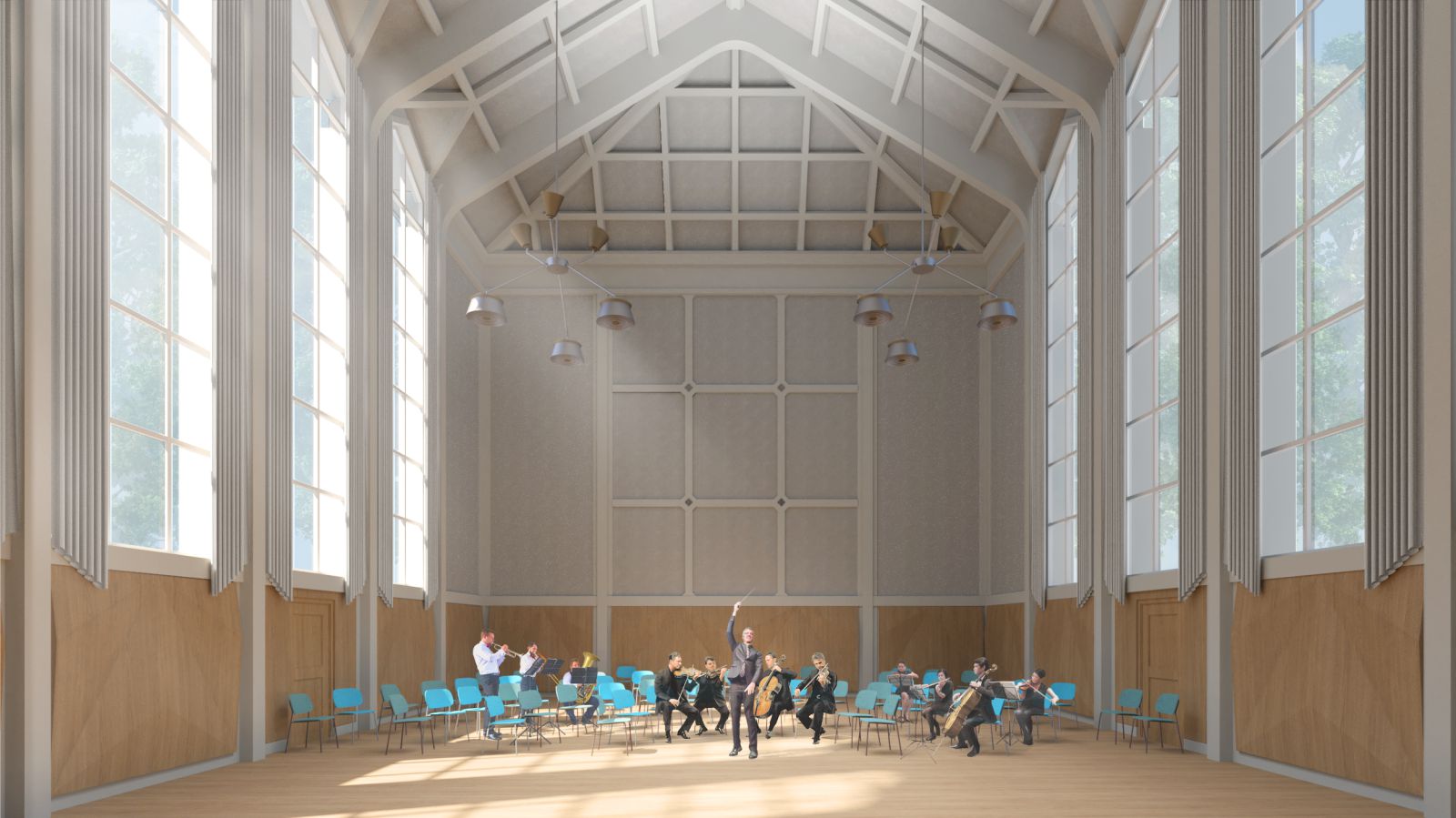
Light oak flooring and sound scattering panels will allow a warm embrace for musicians. These elements form a subtle reference to the wooden church benches that once framed the Church Hall.
‘We make this post-war gem shine again by transforming an imposing concrete structure to an inviting appearance, allowing comfort to its new users” says Janneke van der Velden, Associate Architect and Project Lead.
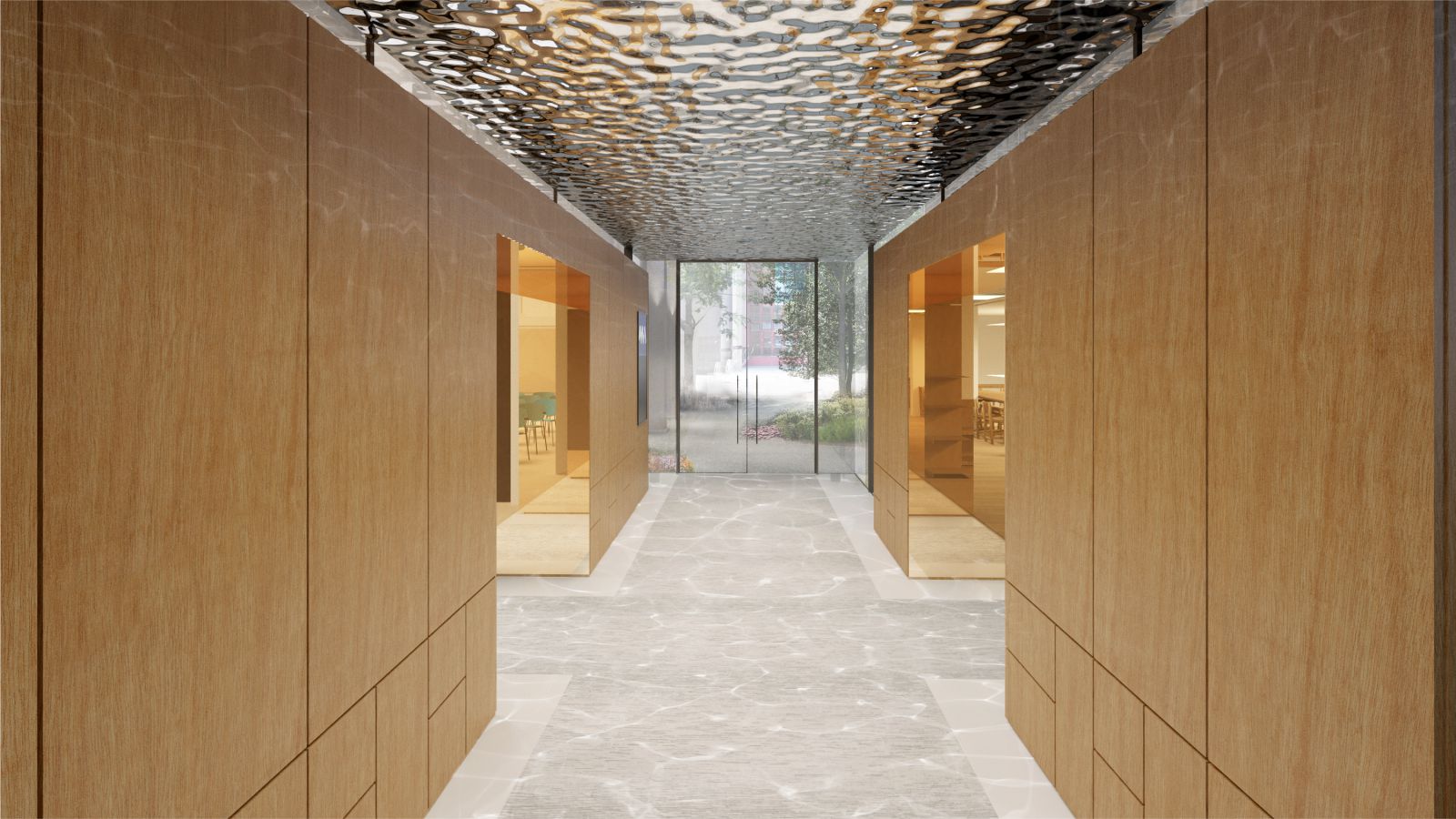
Simply Soft
While the music hall is characterized by brutalist concrete elements, other spaces have a softer appearance. We blend light oak with the existing wooden elements and brass with the metal chandeliers. Down the foyer, former church benches are transformed into wainscoting and the enlarged windows strengthen the connection with the public square.
The consistory will open up for young musicians to easily orient themselves within the building. We ensured a light and fresh interior for safe and comfortable experiences. Along with the sounds of music, Muziekwerf will come to life.
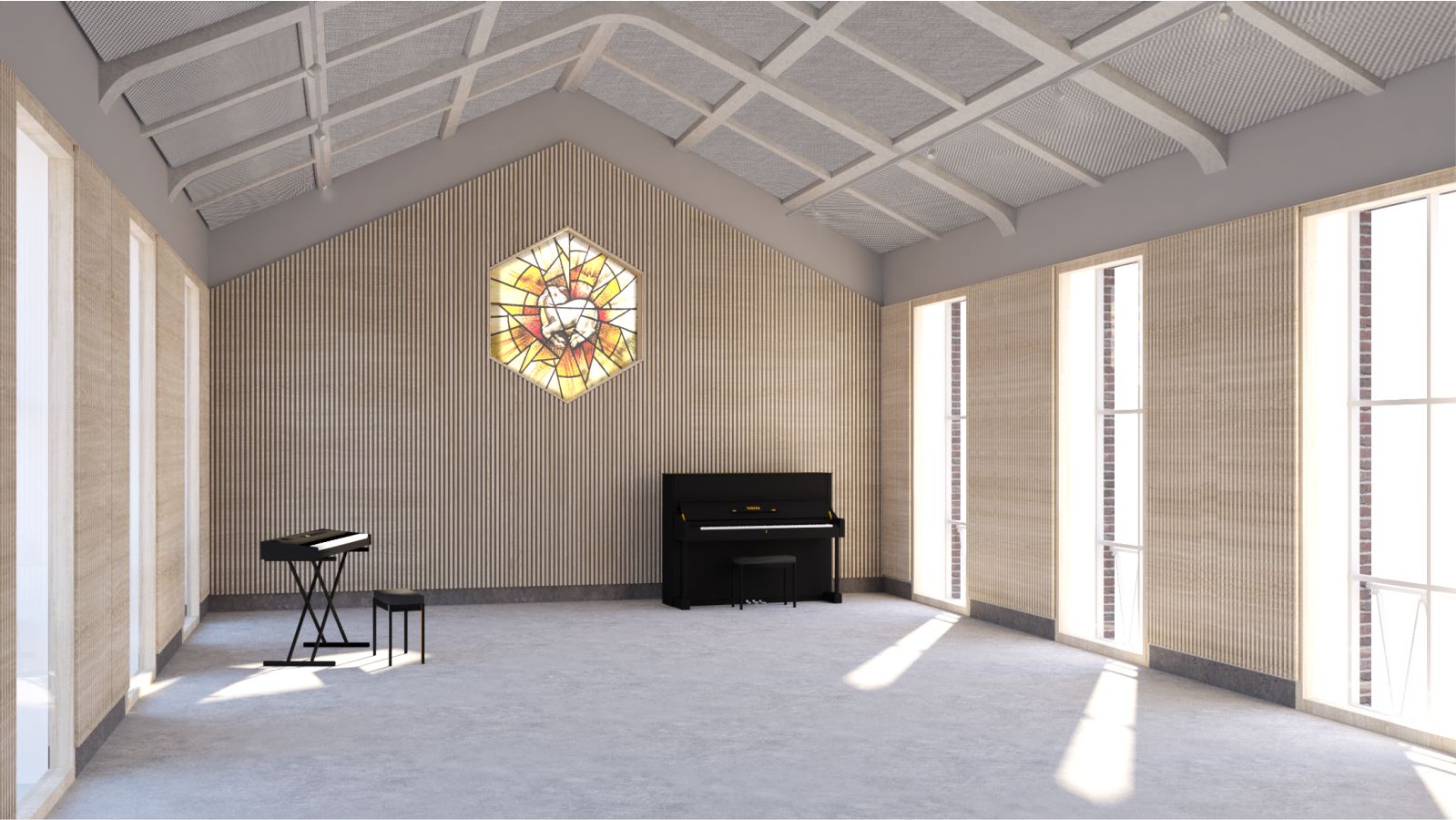
“For decades this building was meant to be hidden and unseen. We are proud to reinvent this gem into a music hub for the youth” – Nanne de Ru, Founder and Partner in Charge.
Balancing Textures
We improved acoustics in the music hall by designing wooden 3D wall-panels that scatter sound waves. In addition, we replaced the stucco on the reed with a pattern of sound absorbing material in the cassette ceiling.
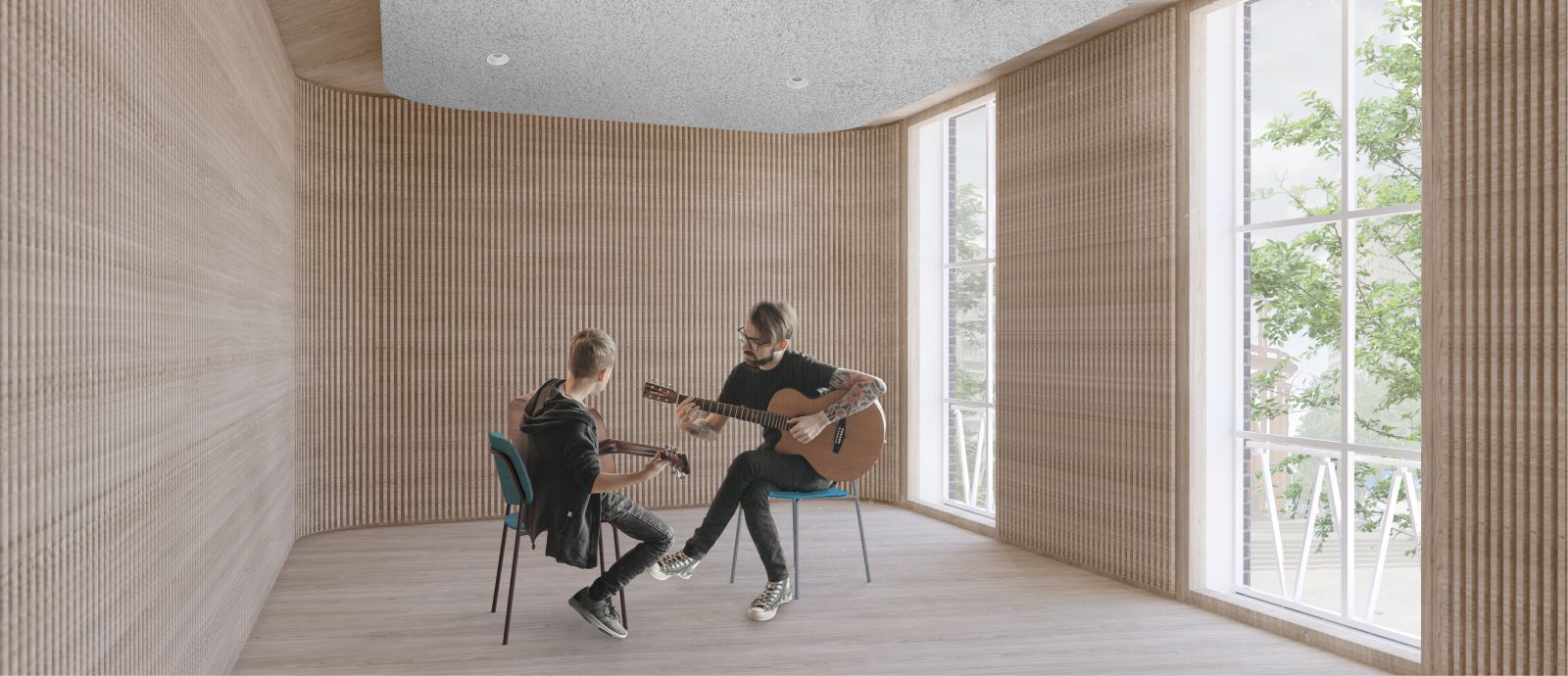
Acoustic curtains point down in the ever returning triangle shape. These powerful triangles add detailing to the ceiling and allow natural light into the space. Water reflections of the Haagseveer dance on the ceilings, forming a coincidental characteristic element. We chose a defining soft palette of colors like ocre, dusty pink, silver, pale mint and petrol.
By combining new and existing materials, we add depth to the space. A subtle play of reflections arises by the mix of transparent, soft and extreme matte interior elements. Once a hidden church, now presenting itself to the city with a play of light on the ceiling of a new entrance. Source by Powerhouse Company.
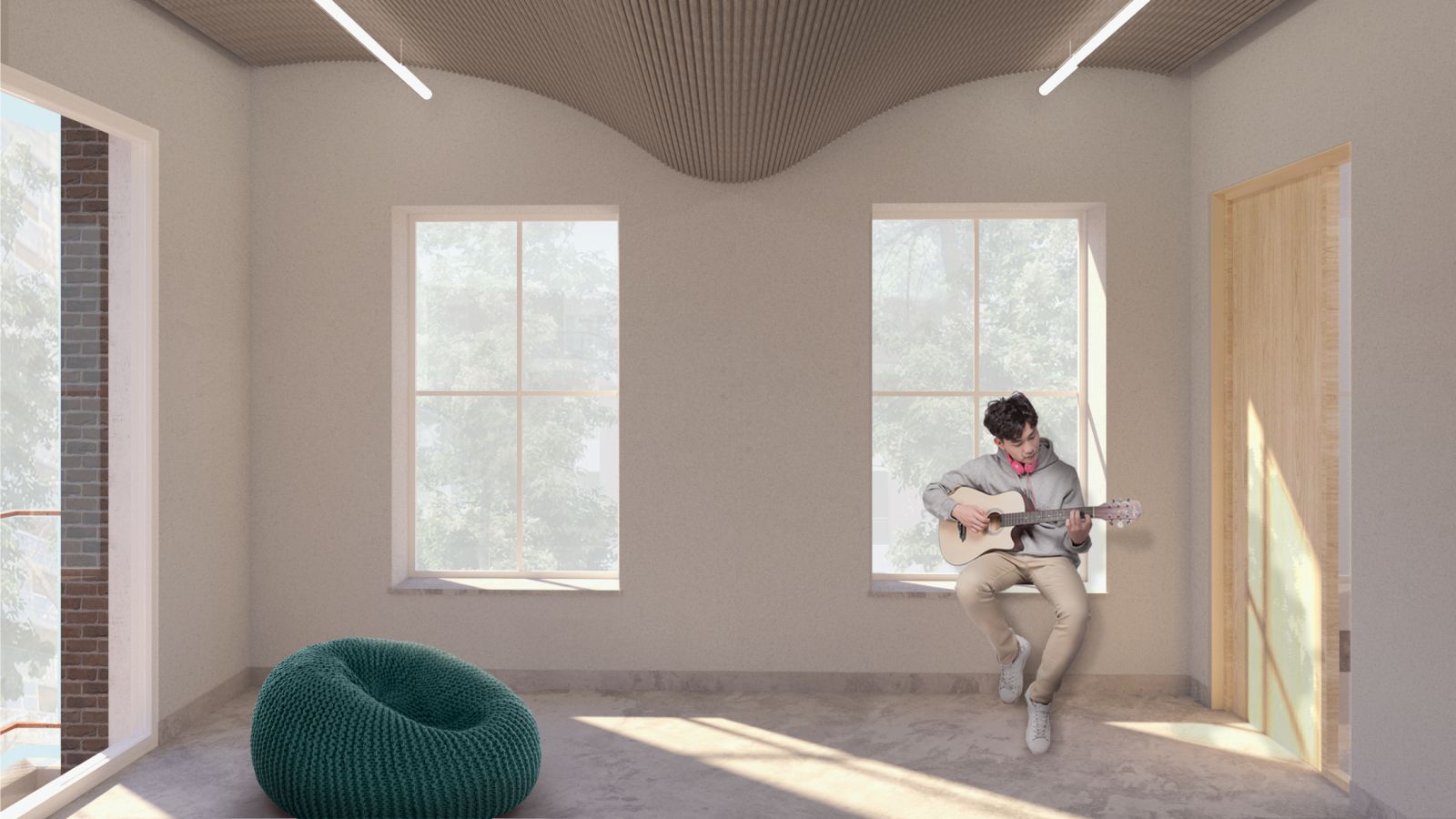
- Location: Rotterdam, Netherlands
- Architect: Powerhouse Company
- Partner in charge: Nanne de Ru
- Structural engineer: BREED Integrated Design
- Climate and Building physics: Wolf Dikken adviseurs
- Fire safety and Electrical engineering: Royal HaskoningDHV
- Light design: Beersnielsen
- Cost consultant: SkaaL
- Client: Droom en Daad
- Status: Under construction
- Size: 930 m2
- Images: Courtesy of Powerhouse Company
